People
In the Kitchen: Artist Jean Shin Shares the Korean Dumpling Recipe That Embodies the Same No-Waste Philosophy as Her Art
The artist's formative experiences in the kitchen helped shape her approach to art.
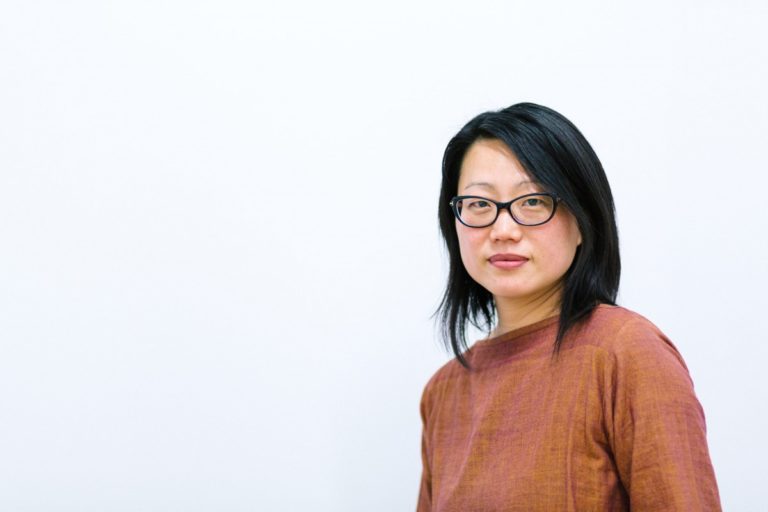
The artist's formative experiences in the kitchen helped shape her approach to art.

Sarah Cascone

While many of us continue to work from home, we’re checking in with artists about the creativity they’ve been cooking up in their kitchens. Read on for the latest installment in our new series on artists’ favorite recipes.
Jean Shin’s approach to cooking and to her studio practice as an artist is pretty much the same: nothing is wasted.
The artist, who was born in Seoul, makes elaborate artwork from a wide range of castoff materials, transforming everything from broken cell phones to green plastic soda bottles into large-scale installations.
That zero-waste approach is rooted in Shin’s childhood, when her grandmother came to live with the family after they had immigrated to Maryland.
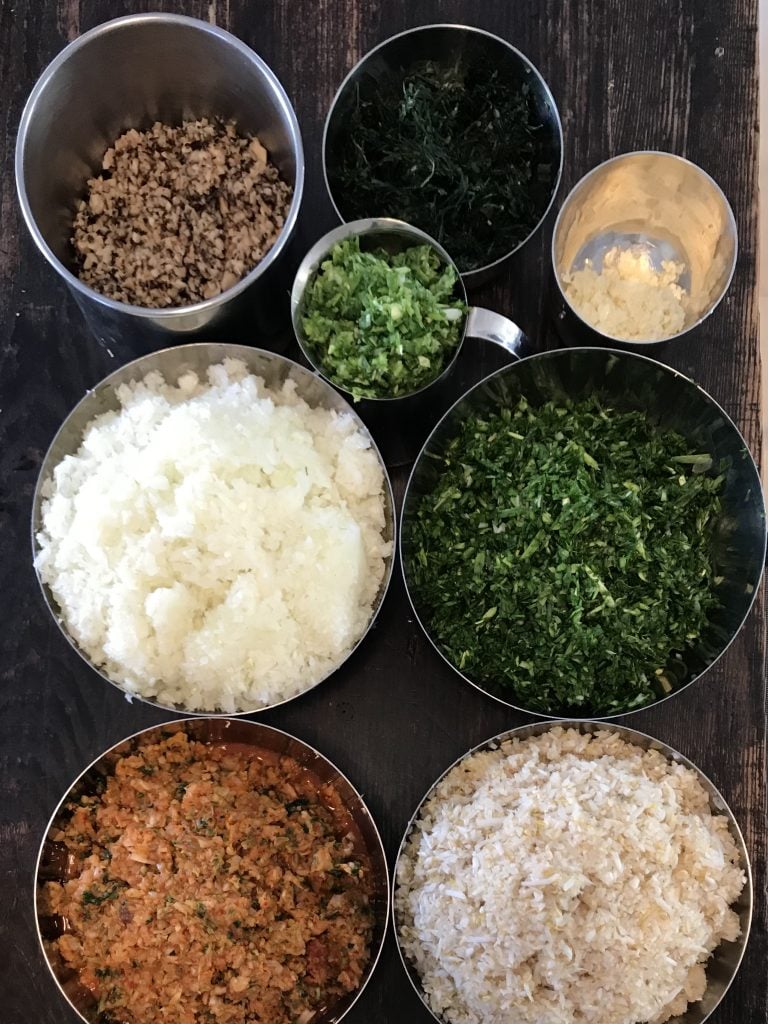
The ingredients for mandu, a traditional Korean dumpling that Jean Shin makes with family every New Year. Photo courtesy of Jean Shin.
“She lived through wartime in Korea, so she salvaged everything and recycled everything,” Shin told Artnet News. “She was always walking around the landscape, foraging, and picking herbs—so much of what are considered weeds are amazing delicacies that Koreans love.”
Shin adopted this resourcefulness. “If there is a chicken, you eat every part of it,” she said. “My husband has gotten into cooking the bones and making charcoal to feed our garden.”
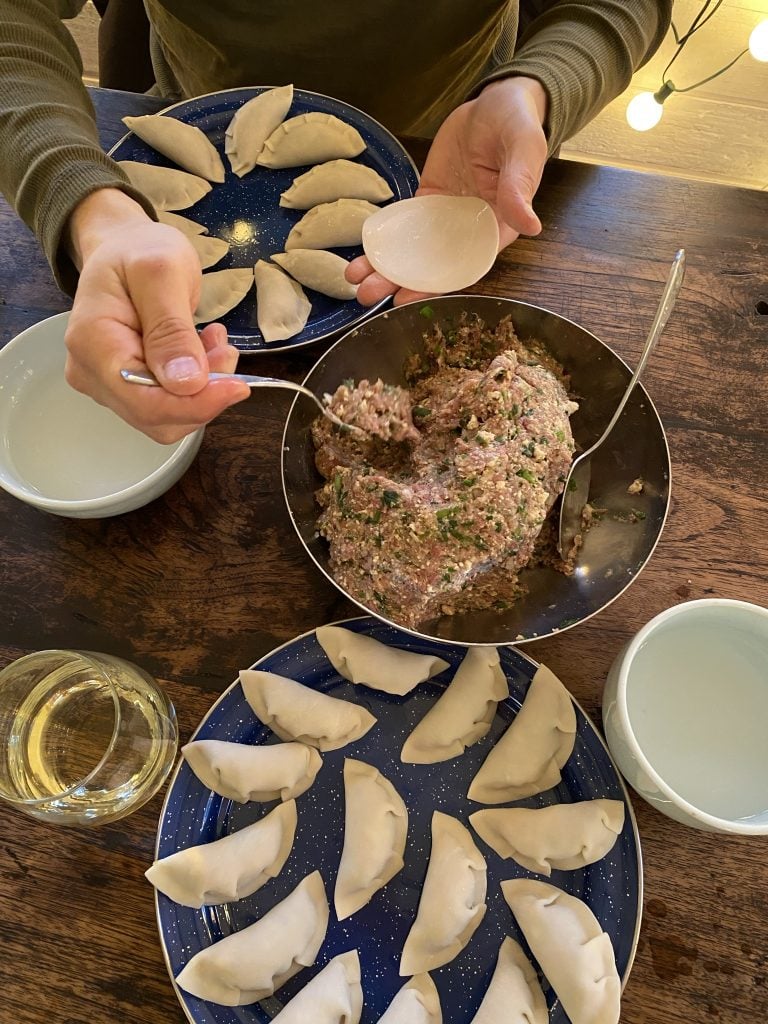
Making mandu, a traditional Korean dumpling. Photo courtesy of Jean Shin.
Shin’s current exhibition at Olana, the historic home and landscape created by Hudson River School artist Frederick Edwin Church in Hudson, New York, has a similar nose-to-tail approach. Her sculpture FALLEN gives new life both to leather remnants discarded by the fashion industry and a fallen hemlock from the Olana grounds.
The 140-year-old tree, planted by Church himself, had to be cut down after it was killed by an infestation of hemlock woolly adelgids, an invasive insect species.
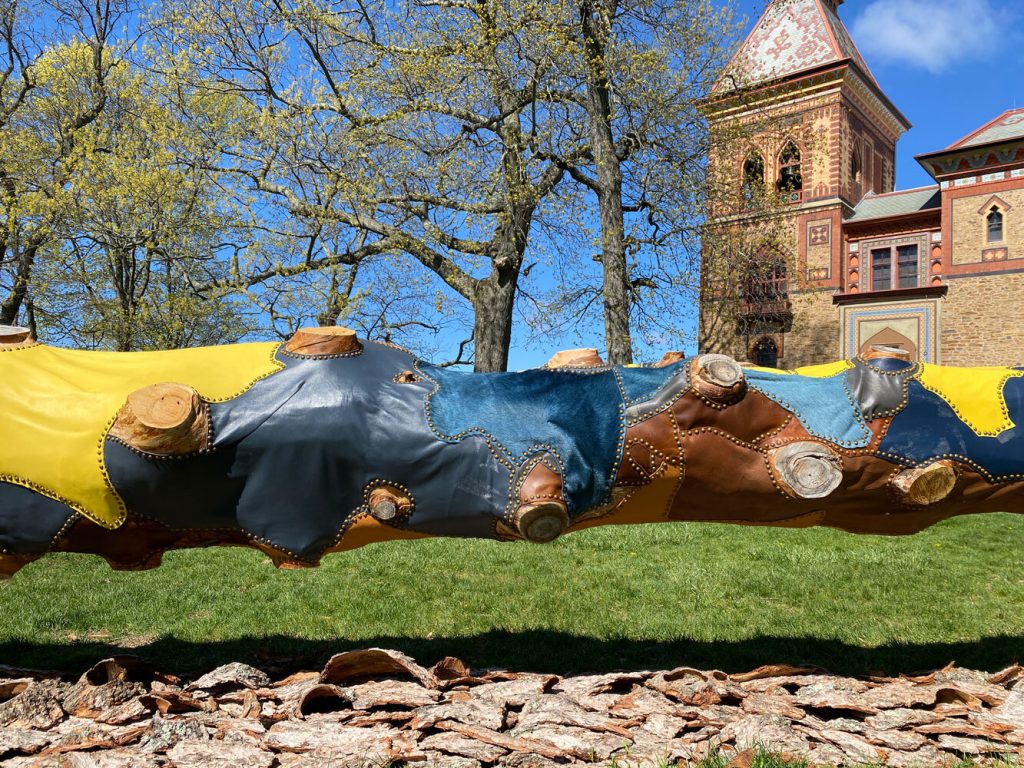
Jean Shin, Fallen (2021 ), at Olana State Historic Site, Hudson, New York. Photo courtesy of the artist.
Shin painstakingly removed the bark and covered the tree in scraps of blue, brown, and yellow leather using upholstery tacks.
The leather skin serves as a shroud, protecting and honoring the tree. But it also references the historic deforestation of the Catskills perpetuated by the tanning industry in the first half of the 19th century. (A tannin in hemlock bark was used to cure hides to make leather.)

The hemlock Jean Shin used to create her sculpture FALLEN at Olana. Photo courtesy of Olana.
When Church built Olana in the early 1870s, he planted hemlocks to help restore the landscape. Shin sees the tree she used to make FALLEN as “a gift from one artist of a different generation to our time,” she said.
Shin has worked with fallen trees before, channelling the communal spirit of a meal in her piece Allée Gathering. A massive banquet table, the sculpture was created in 2019 using dying maple trees from Storm King Art Center in New Windsor, New York.
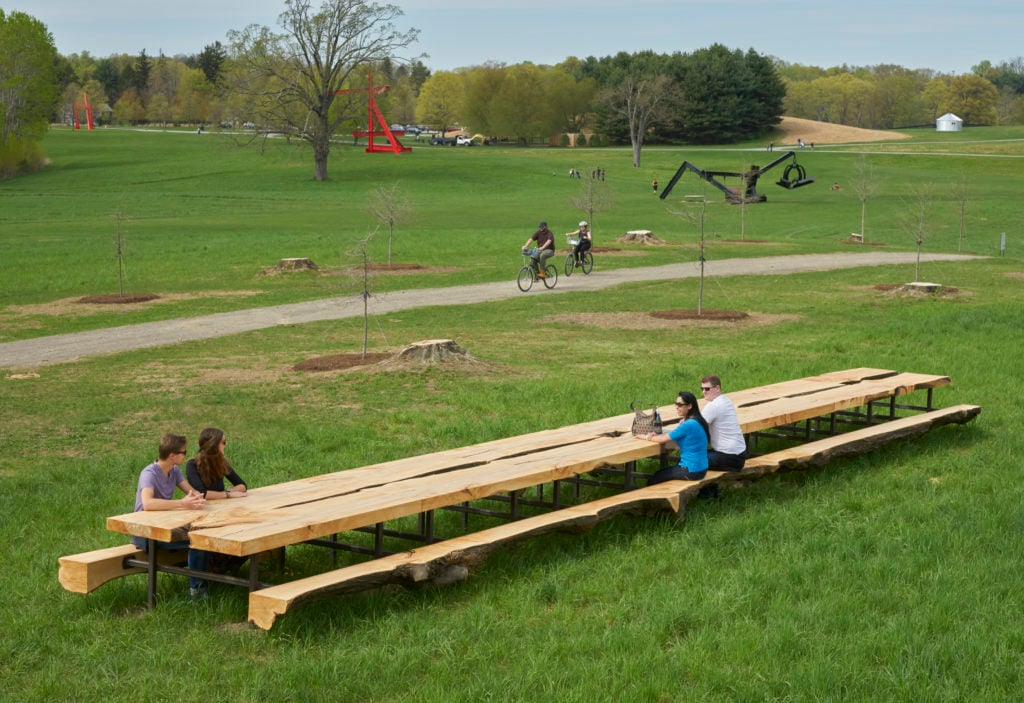
Jean Shin, Allée Gathering (2019). Photo by Jerry L. Thompson, courtesy of the artist.
This weekend, that same work will go on view at Art Omi in Ghent, New York. Just as she did at Storm King, Shin plans to make maple syrup from trees on the Art Omi grounds, to be served at tasting events around the table sculpture.
“There was an opportunity to really activate this idea of tasting the landscape,” Shin said.
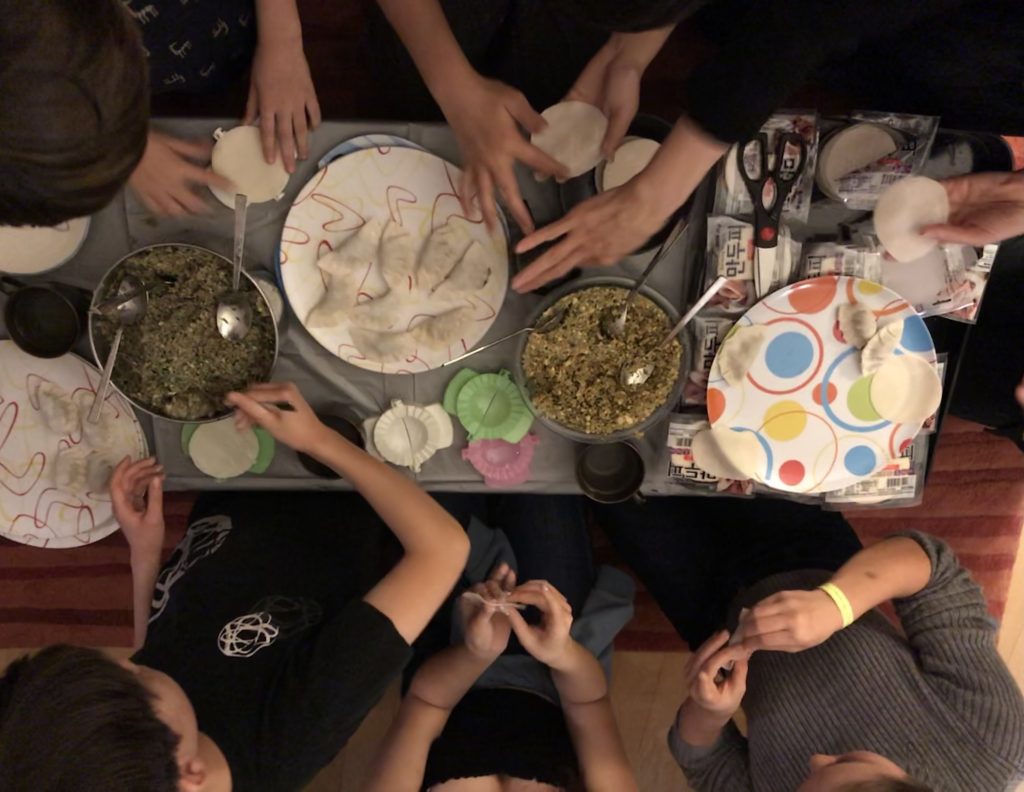
Many hands make light work when it comes to mandu, a traditional Korean dumpling that Jean Shin makes with family every New Year. Photo courtesy of Jean Shin.
In the kitchen, Shin’s go-to meals are typically Korean comfort food, like the mandu dumplings that she makes with family and friends each year to celebrate the New Year. Served with tteokguk, a rice cake soup, the dish is a tradition—sadly suspended during the pandemic—inspired by marathon dumpling-making sessions with her grandma growing up.
“My husband and I spend all day chopping and squeezing and mixing and making hundreds of them,” Shin said. Her grandmother never shared the exact recipe, but she’s done her own research to replicate the taste of her childhood.
“Food is an extension of how we nourish our souls, with all the ancestral spirits that come alive in every bite,” she added. “I hope my art can do some of that.”
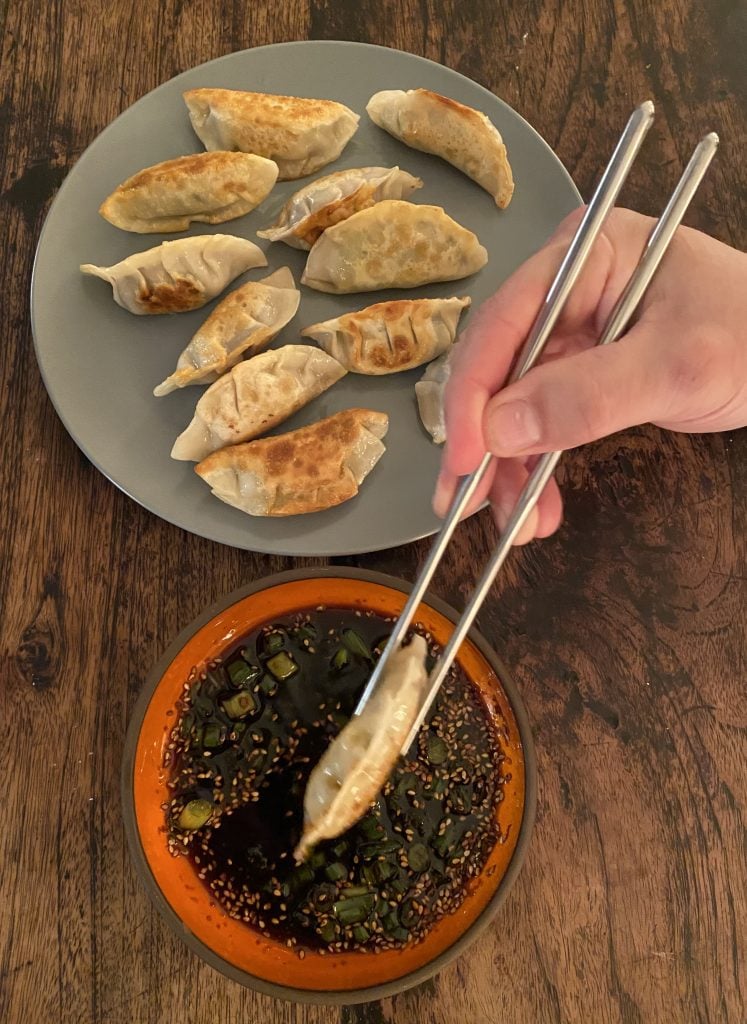
Mandu, a traditional Korean dumpling. Photo courtesy of Jean Shin.
Find the recipe for Shin’s mandu dumplings and tteokguk rice cake soup below.
Tofu Kimchi Mandu
12 ounces mung bean sprouts, chopped
1 cup diced onion
12 ounces kimchi, strained and chopped
4 ounces firm tofu, crumbled
¼ pound ground pork
1½ teaspoons sesame oil
½ teaspoon garlic, minced
¼ teaspoon salt
1 package mandu wrappers, thawed
1 egg, beaten
Pork and Beef Mandu
1 cup of ground pork
2 cups of ground beef
2 cups of chopped buchu (Asian chives), washed and dried in paper towel
4–5 soaked Shiitake mushrooms
½ onion
½ package of tofu
3 cloves of minced garlic
1 tsp kosher salt
1 tsp sugar
1 tbsp plus 2 tsp toasted sesame oil
1 tbsp vegetable oil, plus more for frying
1 tsp soy sauce
60 mandu wrappers
Tteokmanduguk
6 cups water
8 dried anchovies
4–5 shitake mushroom stems
½ onion
1 tsp fish sauce
2 cloves minced garlic
1 egg, beaten
2 sliced green onions
Making the Tofu Kimchi Mandu
Place a large pot of water over high heat. When it boils, add sprouts and onions and cook until sprouts are soft, about five minutes. Drain in colander and rinse under cold water.
In a large mixing bowl, combine sprouts and onions with kimchi. Working in batches, transfer a handful to cutting board and mince. Return vegetables to colander in sink. Add tofu, tossing to combine. Press down on vegetables with your hands, draining as much liquid as possible.
Working in batches, place a handful of vegetable-tofu mixture on a large piece of cheesecloth or clean, porous cloth, fold up edges and twist, squeezing out liquid. Empty back into mixing bowl. When done, transfer to colander, top with parchment paper and weigh down with a heavy, water-filled pot. Drain for at least a half-hour.
In a large mixing bowl, combine pork, oil, garlic and salt. Add drained vegetables and mix well with your fingers.
Making Pork and Beef Mandu
Combine pork and beef into a big bowl with kosher salt, 1 tbsp of toasted sesame oil, ½ tsp of ground pepper and mix it by hand and push the mixture of meat on the side of the bowl.
Mix Asian chives with vegetable oil, and add to the bowl with the garlic, placing it next to the pork.
Chop the soaked shiitake mushrooms, reserving the stems.
In a small bowl combine mushrooms, onion, soy sauce, sugar, and 1 tsp sesame oil. Mix by hand and add to the big bowl.
Squeeze tofu with a cotton cloth or paper towel and put it into a small bowl. Add a pinch of salt and 1 tsp of toasted sesame oil. Mix it by hand. Transfer to the large bowl and mix everything by hand.
The trick is to make small test sample fillings like meatballs to cook and taste. Then adjust the filing mixture with more soy, sesame, or salt to one’s liking—repeat until the filling is very flavorful.
Cooking the Mandu
Place a scant tablespoon of filling in center of a wrapper, brush wrapper rim with egg or cold water, and fold, forming a half moon. Pinch closed with your fingers and squeeze out air. Wrap end tips around until they touch, dab with egg and pinch together: it will look like a tortelloni. Transfer to a parchment-lined plate and repeat until you have used up all your filling.
Heat some vegetable oil in a frying pan and add the mandu. Lower the heat to low-medium and cook with the lid on the pan.
Turn the mandu after two or three minutes. Add two or three tbsp of water and cook for a few more minutes with the lid on, until golden brown.
Serve hot with a dipping sauce made of equal parts vinegar and soy sauce.
Making the Soup
In a pot, combine water, dried anchovies, the leftover shiitake mushroom stems, and the onion. Boil over medium heat for 20 to 30 minutes. Remove the anchovies and onion.
Add fish sauce, garlic, and some of your mandu. Cover and cook until mandu float to the top.
Add egg, and green onions.
Serve hot with a bowl of kimchi, and ground pepper to taste.
“Fallen by Jean Shin” is on view at Olana, New York, on May 2–October 31, 2021.
“Jean Shin: Allée Gathering” is opening at Art Omi, 1405 County Route 22, Ghent, New York, on May 29, 2021.